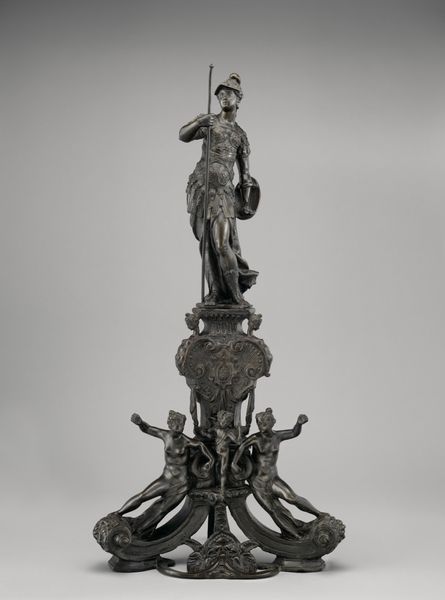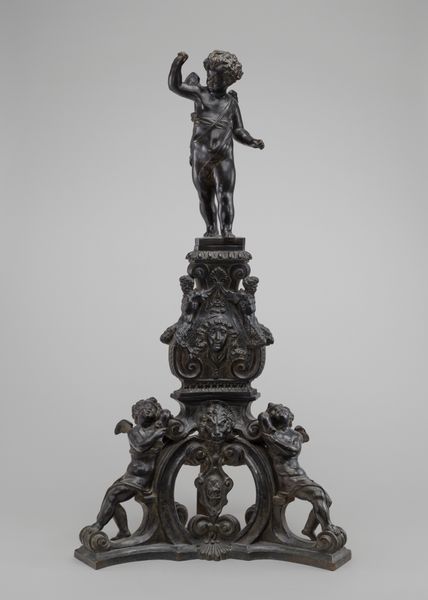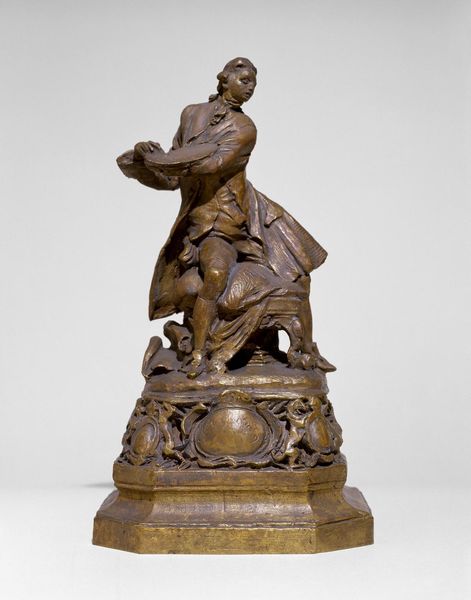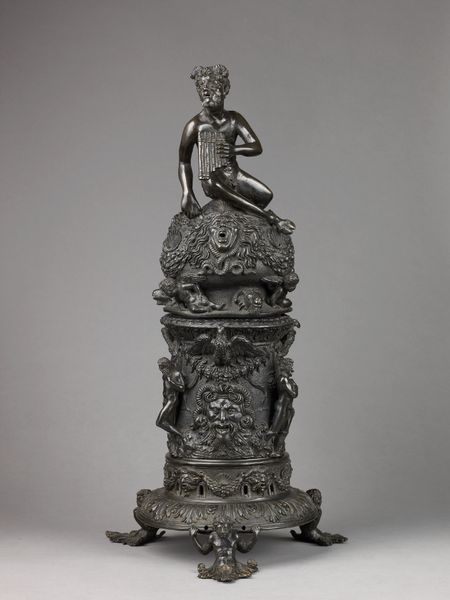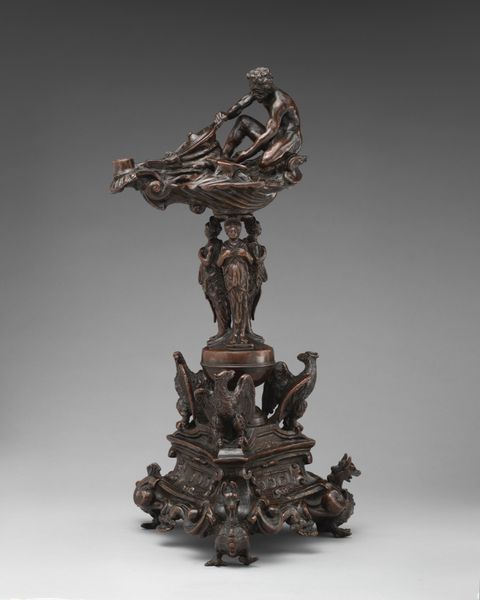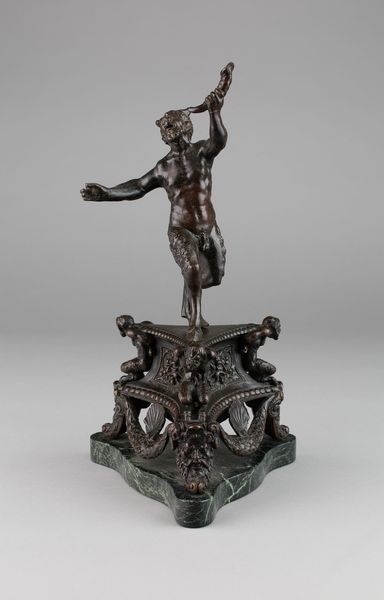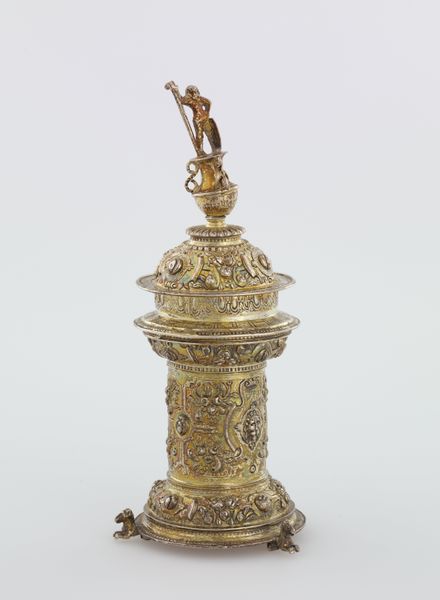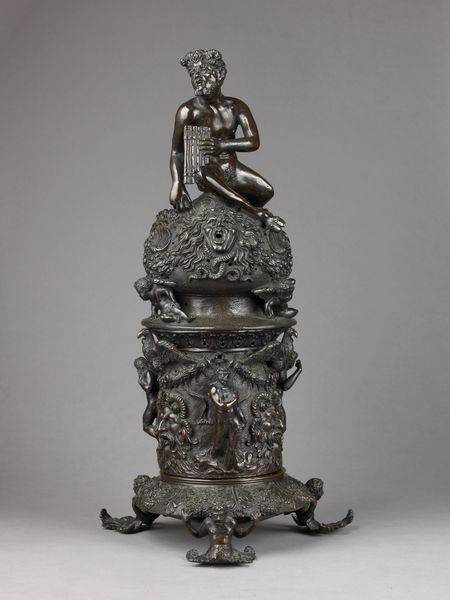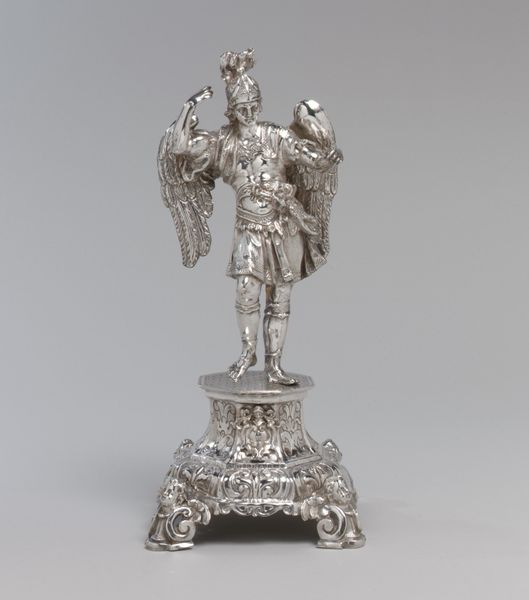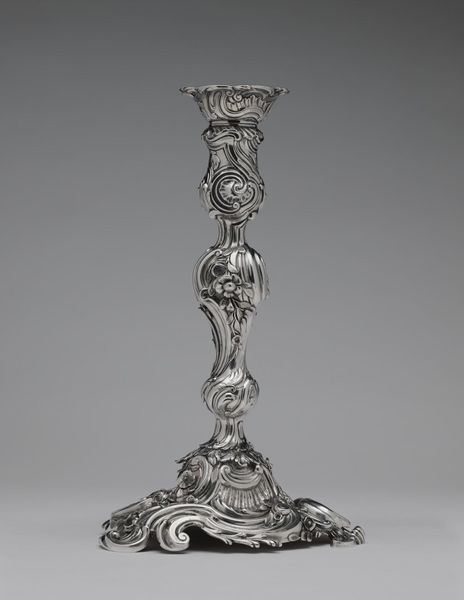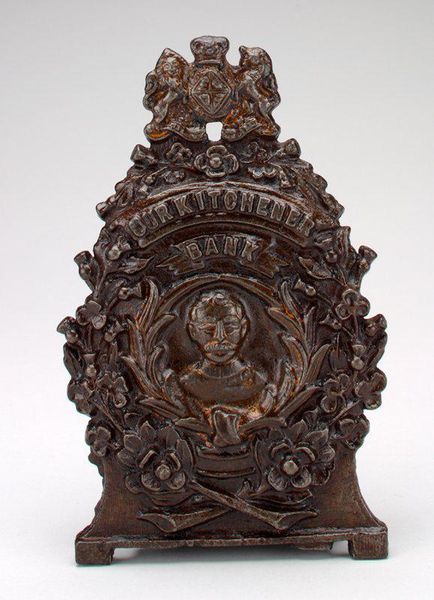
metal, bronze, sculpture
#
metal
#
stone
#
sculpture
#
bronze
#
figuration
#
11_renaissance
#
sculpture
#
italian-renaissance
Dimensions: height 40.6 cm, width 19.0 cm, depth 16.5 cm, width 26.0 cm, depth 23.0 cm
Copyright: Rijks Museum: Open Domain
Editor: This elaborate perfume burner, made by Desiderio da Firenze around 1540, is quite a sight. Cast in bronze, it has so many figures integrated into the design. What is the significance of all these figures? Curator: Well, look closely at the crowning figure, a soldier atop this miniature monument. His stance and shield immediately evoke Mars, the Roman god of war. But it's not merely about warfare, is it? Consider what a perfume burner signifies. Editor: Luxury and ritual? Curator: Exactly. The rising smoke from such burners often symbolized prayers or offerings ascending to the heavens, connecting the earthly with the divine. Now, consider Mars, but not just as a god of war. He also represents virility, strength, and protection. Editor: So the scent rising from the burner carries those qualities symbolically? Curator: Precisely. It suggests an attempt to imbue a space, or perhaps even a person, with the strength and power associated with Mars, along with the sensory experience of fragrance. This object then becomes a nexus of sensory experience and symbolic representation. The imagery repeats down to the sphinxes, symbols of wisdom and guardians of sacred spaces, further enriching the experience of those consuming it. Do you think such layers of meanings enhanced its appeal? Editor: Absolutely! Knowing the layers of meaning transforms a simple object into something so much more potent and symbolic. Thanks, I will definitely look at objects differently now! Curator: Indeed, that's what makes studying cultural memory and objects so compelling. Each form, each figure carries with it echoes of past beliefs and values.
Comments
No comments
Be the first to comment and join the conversation on the ultimate creative platform.
